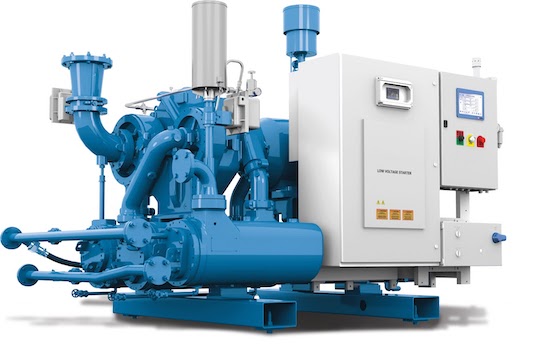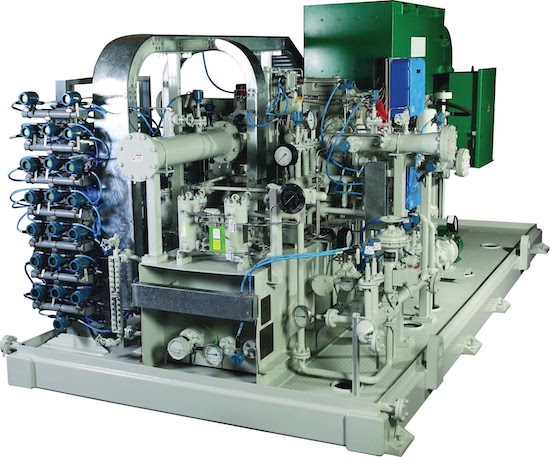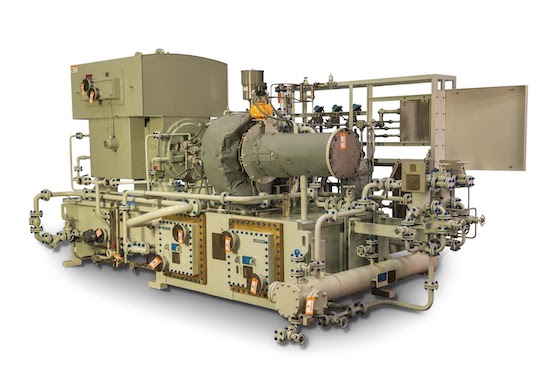The budget for the project was \$100,000; however, the quote is \$1,000,000. How did this happen? Why did it happen? These are questions many engineering contractors and end users ask when the air compressor cost dramatically exceeds the budget. Unfortunately, as the purchaser and the project engineer start to evaluate their potential suppliers from the Project Front-End Engineering Design (FEED) stage and transition to a Firm Request for Quote stage, an all too familiar trend starts to become apparent. The quotes during the FEED stage were all based on a few documents and a simple data sheet detailing what was needed, and quotes came in around the \$100,000-range. Now firm bids are coming in around \$1,000,000.
How did every manufacturer come in so far off-base during the FEED? Did the project scope balloon between when the FEED and firm bids were requested? Did those 200-1,000 pages of extra specifications that were developed and added to the scope for the firm proposal stage have anything to do with it?


Shown are standard centrifugal air compressors used in general industry and manufacturing applications.
Standards and Regulations
In an ever-evolving world of regulations, requirements, and legal ramifications, it can be all too easy to want to cover all the bases by adding a wide range of industry codes and standards to any project being put out for bid. Many assume that if the purchased equipment meets all the requirements of every developed code and standard then surely it will be a reliable and safe machine to operate with the best performance and energy efficiency. However, many of these codes and standards are developed with a tremendously broad range of machinery and equipment in mind and they may not always fit well with the specific project being developed. Compliance to these codes and standards may require very costly modifications to a manufacturer’s standard product for little to no real benefit.
This article specifically addresses how such standards can impact the design of a centrifugal air compressor and take a relatively inexpensive project to an expensive project that exceeds the budget.
Preeminent among many factors that add tremendous cost to a project are wide-ranging industry standards such as those developed by the American Petroleum Institute (API). Some API standards that apply to centrifugal air compressors are API-617, API-672, and API-614. These referenced API standards, in particular, were developed primarily for the oil and gas industry and for machinery directly involved in the refinement of oil and production of chemical products, or for single-shaft, multistage centrifugal and axial air compressors of a critical nature that have no backup and are expected to run for years with only minor maintenance and instrument calibrations done while the unit is still in operation. These units also often have stand-alone, skid mounted lube oil systems (consisting of lube oil pumps, cooling and filtration systems) which are independent of the air compressor skid itself. Most integrally-geared air compressors are used for general industry and manufacturing applications; however, API standards are still often applied.
To manage this issue, many centrifugal air compressor manufacturers have made efforts, where economically feasible, to design their standard machines in accordance with relevant API standards. Typically, a standard air compressor with no modifications is designed in compliance
with API 672 to some degree. To achieve higher compliance to API 672 becomes extremely expensive and it normally is not necessary.
Another consideration to note, is that most atmospheric air compressors have their own integral lube oil system, and as such many aspects of the API 614 standard are not applicable. Requiring API 614 compliance becomes exceedingly difficult and very cost prohibitive for little, if any, overall benefit.


API-compliant, heavy-spec centrifugal air compressors.
Instrumentation
Special instrumentation is another design element that can potentially increase costs, especially if there is a brand preference. If the production facility or plant has standardized instrumentations on air compressors in order to make spare parts inventory more simplistic, the specified instrumentations may increase the cost of the new machine since the air compressor manufacturer may not qualify for bulk discounts.
In some cases, the air compressor manufacturer could pay three times or more what the plant owner/operator pays for the instrumentation. The cost of the instrumentation then becomes an excessive cost. It is important to understand that brand and name recognition does not always equate to improved functionality over the standard instrumentation the air compressor manufacturer is offering. In many cases, in the event an instrument does need to be replaced later in the machine’s life, it may be swapped for the instrument on the shelf at the customer’s site with little, if any, modification to the air compressor. This is a key point that can be discussed during the bid phase with the air compressor manufacturer.
Another consideration is the calibration of sensors in the field after the air compressor is put in operation. In many specifications, “block and bleed valves” are specified so that an instrument might be calibrated while an air compressor is still in operation. This is normally possible on process machines where multiple sensors are measuring the same variable and they “vote” on what the true measurement is and if it is within operational tolerances. This is not a common arrangement in most air compressors. Even if block and bleed valves are present, the machine will, in many cases, go into fault and shut down if it loses readings from a sensor as maintenance personnel try to perform calibrations while the air compressor is running. In this case, the block and bleed valves have not provided any useable functionality or value, but they have contributed to the excessive initial procurement costs.
Motor
A specialized motor can be another source of unnecessary expense. In many cases, manufacturers offer either Open Drip Proof (ODP) or Totally Enclosed Fan Cooled (TEFC) motors in smaller centrifugal air compressors, with Totally Enclosed Air to Air Cooled (TEAAC), Weather Protected type II (WPII) and water-cooled motors common in larger applications. Again, many “industry” specifications (API, IEEE, end user, etc.) that may seem common can begin to add a multitude of costs depending on type of motor specified, as well as scope additions, such as lightning arrestors, motor surge protectors, and large service factors.
Some owners/operators building new facilities will also try to standardize on one specific motor manufacturer, which may charge much more for a motor than what the air compressor manufacturer normally expends for a similar motor from a different manufacturer. It is important to evaluate both the air compressor manufacturer’s standard offering and the requested specified motor cost to determine if the added requirements are worth the added cost.
Coolers
Most centrifugal air compressor manufacturers have cooler designs utilizing “standard” materials. In many cases, customers may specify other materials. These requirements should be evaluated and discussed in detail with the compressor manufacturers during the bid process to determine if the specified materials are, in fact, necessary for the application. Changing materials can have serious repercussions on heat transfer, and thus the size of the coolers required. As most air compressor manufacturers place the coolers under the main gear casing, a size change can become tremendously costly with major design implications; to say nothing of the added cost of more exotic materials.
Controls
Today, every major centrifugal air compressor manufacturer offers a microprocessor or programmable logic controller (PLC) based local air compressor controller with software developed to ensure reliable, safe, and energy efficient operation of the controlled equipment. In many instances, however, customer specifications call for very specific control systems, or even specific brands and third party developed software to run the machines. Sometimes, duplex control systems are even required to maintain air compressor functionality in the event of a controller failure, as is often seen in process critical equipment, with no backup for the main unit. These requirements begin adding to the procurement cost of the air compressors; often times for no real benefit as many customers have entire backup air compressors to allow for continued production operations in the event of an air compressor failure.
Testing and Documentation
Most manufacturers of centrifugal air compressors offer several options for unwitnessed or witnessed testing as well as quality documentation for the production facility, such as an inspection and test plan (ITP). These tests and documents usually add nominal costs to the project. Custom tests or documents will result in additional fees.
Customer hold, inspection, and test points on an ITP can add weeks to production. Special certifications, custom programming, converting symbology for documents like wiring diagrams or piping and instrumentation diagrams can all begin to take a toll on the final procurement cost. When evaluating an offering from a manufacturer, care should be taken to discuss vendor data requirements to ensure that both the manufacturer and purchaser are in agreement on what is required and understand both cost and lead time impacts.
|
The Centrifugal Compressor Section of CAGI consists of the following member companies:
The Compressed Air and Gas Institute is the united voice of the compressed air industry, serving as the unbiased authority on technical, educational, promotional, and other matters that affect compressed air and gas equipment suppliers and their customers. CAGI educational resources include e-learning coursework, selection guides, videos and the Compressed Air & Gas Handbook. For more information, visit the CAGI web site at www.cagi.org. |
Conclusion
In summary, the overall air compressor package and the cost to comply to standards and codes above and beyond the manufacturer’s design must be evaluated against the overall requirement for the equipment being requested. If reliability is the most important concern, but the cost triples (or more) to meet the specifications, ordering a second stand-by unit may be a more prudent solution to ensure the compressed air system at the end destination achieves the desired results. Likewise, partial compliance to specifications can result in a unit that will meet the end goals while not designing to certain requirements that are both overly cost prohibitive to enact and provide minimal additional protection or function, if any, over the manufacturer’s standard offering.
As discussed, specifying motors, instrumentation, coolers, controls and additional testing documentation more than what is included in a centrifugal standard machine will add additional costs to the project, possibly without benefit. It is important for the customer to review requirements, during the bidding process, with air compressor manufacturers to ensure an accurate quotation will be produced for an ai compressor that will meet the needs of the application.
For more information, visit the CAGI web site at www.cagi.org.
All photos courtesy of the Compressed Air and Gas Institute.
To read more Air Compressor Technology articles, please visit www.airbestpractices.com/technology/air-compressors.




